
Roche Abbey is a now-ruined abbey in the civil parish of Maltby, Rotherham, South Yorkshire, England. It is in the valley of Maltby Dyke, known locally as Maltby Beck, and is administered by English Heritage. It is a scheduled monument and Grade II* listed in the National Register of Historic Parks and Gardens.

Broomhill and Sharrow Vale — which includes the districts of Broomhill, Broomhall, Crookesmoor, Endcliffe, Sharrow Vale and Tapton Hill — is one of the 28 electoral wards in City of Sheffield, England. The ward was created following the 2015 local government boundary review out of parts of the old Broomhill, Central and Nether Edge wards. It is located in the western part of the city. The population of the Broomhill ward in 2011 was 16,966 people in 5,708 households, covering an area of 2.7 km2. Broomhill & Sharrow Vale is one of the wards that make up the Sheffield Central Parliamentary Constituency.

Bishops' House is a half-timbered house in the Norton Lees district of the City of Sheffield, England. It was built c. 1500 and is located on the southern tip of Meersbrook Park. It is one of the three surviving timber-framed houses in the city.

Wickersley is a village and civil parish in the Metropolitan Borough of Rotherham in South Yorkshire, England, situated 3 miles (5 km) from the centre of Rotherham. The area is very near to road junctions for the M1, M18 and A1(M).
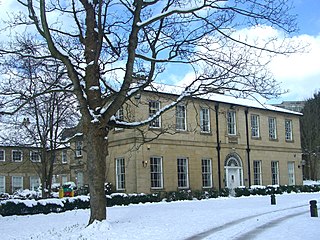
Andrew Wilkinson (1697–1784), of Boroughbridge, Yorkshire, was a British estate manager and Whig politician who sat in the House of Commons for 35 years between 1735 and 1772.

Longley is a suburb of the City of Sheffield, in South Yorkshire, England. It lies four km north of the city centre and is a residential neighbourhood made up mostly of housing built by Sheffield City Council in the late 1920s. The suburb falls within the Firth Park ward of the City.

David Rogerson Mellor was an English designer, manufacturer, craftsman and retailer.
Pickburn is a hamlet in South Yorkshire, England, close to the village of Brodsworth and Brodsworth Hall.

The Jessop Hospital for Women was a hospital in Sheffield, South Yorkshire, England. At the time of its closure in 2001, it was managed by the Central Sheffield University Hospitals NHS Trust.
Roger de Busli was a Norman baron who participated in the conquest of England in 1066.
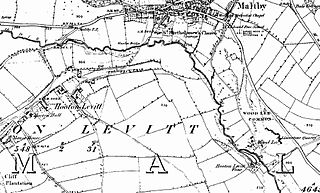
Hooton Levitt is a village and civil parish in the Metropolitan Borough of Rotherham in South Yorkshire, England; one of four villages in the county that carry the name of Hooton, meaning 'farmstead on a spur of land'. It has a population of 110, increasing to 132 at the 2011 Census.
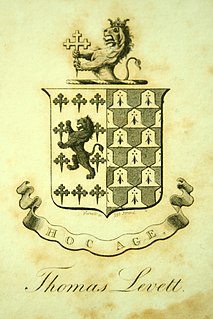
Levett is a surname of Anglo-Norman origin, deriving from that of the French de Livet, which is held particularly by families and individuals resident in England and British Commonwealth territories.

Sir Thomas Gargrave (1495–1579) was a Yorkshire Knight who served as High Sheriff of Yorkshire in 1565 and 1569. His principal residence was at Nostell Priory, one of many grants of land that Gargrave secured during his lifetime. He was Speaker of the House of Commons and vice president of the Council of the North.

William Levett was lord of the manor of the South Yorkshire village of Hooton Levitt, a village named in part for his ancestors, and became the owner of the patronage of Roche Abbey on marriage to the granddaughter of the Abbey's cofounder Richard FitzTurgis, a Norman baron who co-founded Roche with the great-nephew of one of England's most powerful Norman barons, Roger de Busli.
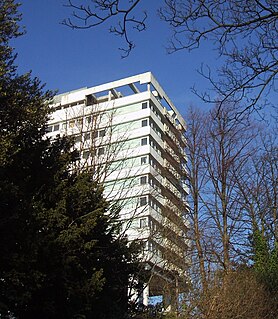
The Hallam Tower was a hotel located in Broomhill area of Sheffield, South Yorkshire, England.

Oakes Park is a privately owned, historic park land in the green-belt area of south Sheffield. It contains 15 private homes as well as a 17th-century English country house which now operates as The Oakes Holiday Centre, a Christian, residential activity centre for young people between the ages of 8 and 18. It is set in extensive grounds which make it very difficult to be seen by the general public. It is situated on Norton Lane in the suburb of Norton within the City of Sheffield in England. The house is a Grade II* listed building, as are several other buildings and features.

Norton Hall is an English country house situated on Norton Church Road in the suburb of Norton in Sheffield, England. For most of its history it has been a private residence, in its latter history it has been used as a NHS hospital, a private hospital and has now been converted into high quality apartments. It is a Grade II* listed building.
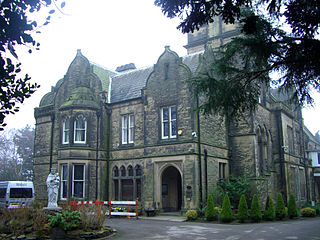
Mylnhurst is a small English country house on Button Hill in the Ecclesall area of Sheffield, England. The house was previously a private residence, it now serves as a private school. The house along with the attached stables and lodge are Grade II listed buildings.

Bradfield Dale is a rural valley 12 kilometres (7.5 mi) west-northwest of the City of Sheffield in England. The valley stands within the north-eastern boundary of the Peak District National Park just west of the village of Low Bradfield. The dale is drained by the Strines Dike which becomes the Dale Dike lower down the valley, these being the headwaters of the River Loxley. The dale contains two reservoirs, Strines and Dale Dike, and a third Agden Reservoir stands in a side valley just above Low Bradfield. The dale is characterised by agricultural land interspersed with farming and residential buildings. It is approximately 5 kilometres (3.1 mi) long from its foot at Low Bradfield to its head on Strines Moor.
William Jessop of Broom Hall, Sheffield, Yorkshire, was an English lawyer, and Whig politician who sat in the English and British House of Commons for 32 years between 1702 and 1734. He was a judge on the Anglesey and Chester circuits.


















